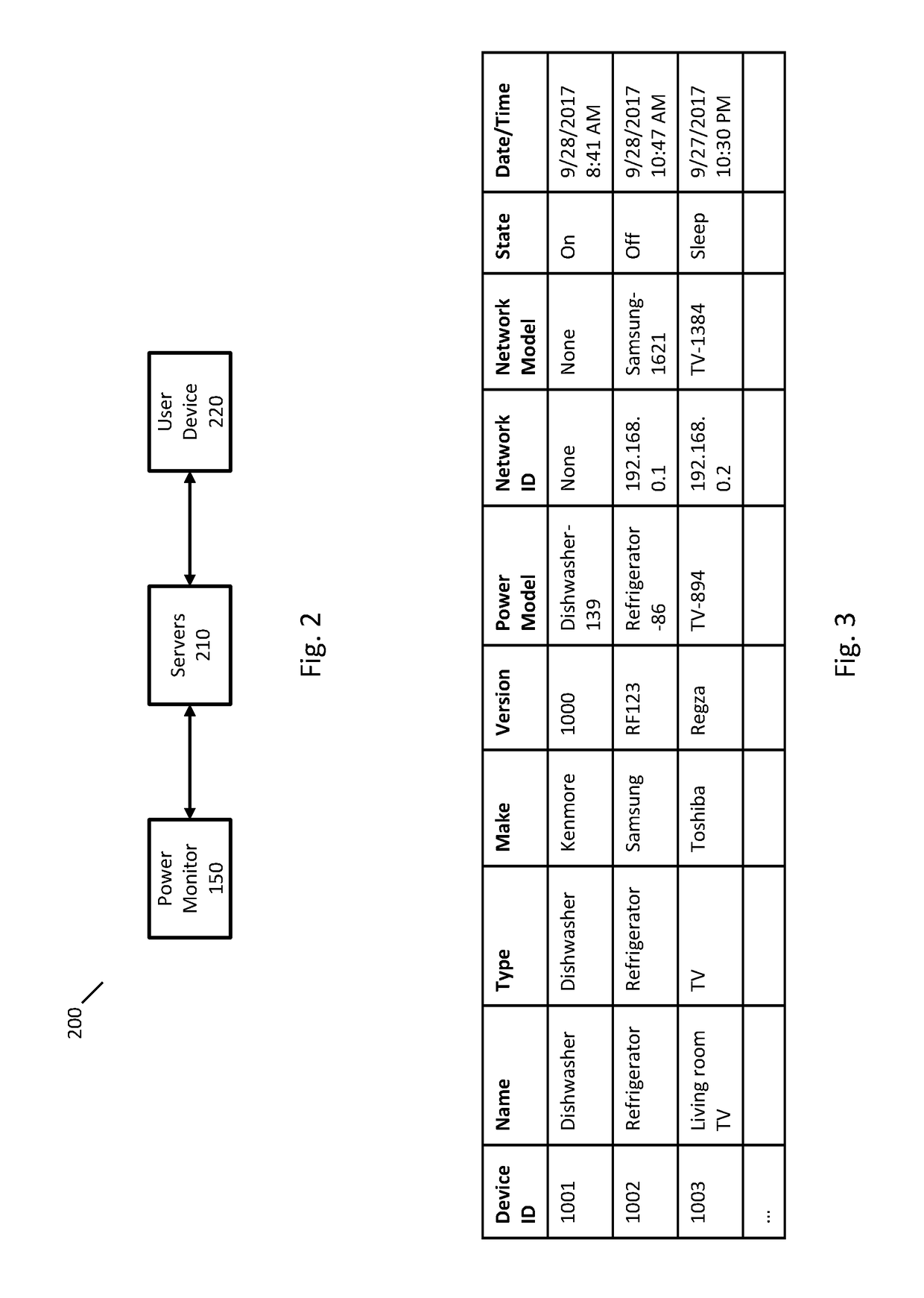Identifying and categorizing power consumption with disaggregation
a power consumption and disaggregation technology, applied in the direction of power measurement by digital technique, etc., can solve the problems of large number of devices that can be expensive, not be practical to monitor all, and significant manual effor
- Summary
- Abstract
- Description
- Claims
- Application Information
AI Technical Summary
Benefits of technology
Problems solved by technology
Method used
Image
Examples
Embodiment Construction
[0023]Described herein are techniques for determining information about devices in a building, such as determining when devices turn on or off or how much power a device is consuming. One source of data in determining information about devices in a building is the power line that provides power to the devices in the building. Electrical sensors may be placed on the power line (or lines) that are providing power to the building, and disaggregation techniques may be used to determine information about individual devices in the building. For example, any of the techniques described in U.S. Pat. No. 9,443,195, which is hereby incorporated by reference in its entirety for all purposes, may be used to determine information about devices using electrical measurements.
[0024]Another source of data for determining information about devices in a building is a computer network in the building. A building may have a network, such as a local area network, and devices may connect to the network vi...
PUM
 Login to View More
Login to View More Abstract
Description
Claims
Application Information
 Login to View More
Login to View More - R&D
- Intellectual Property
- Life Sciences
- Materials
- Tech Scout
- Unparalleled Data Quality
- Higher Quality Content
- 60% Fewer Hallucinations
Browse by: Latest US Patents, China's latest patents, Technical Efficacy Thesaurus, Application Domain, Technology Topic, Popular Technical Reports.
© 2025 PatSnap. All rights reserved.Legal|Privacy policy|Modern Slavery Act Transparency Statement|Sitemap|About US| Contact US: help@patsnap.com



